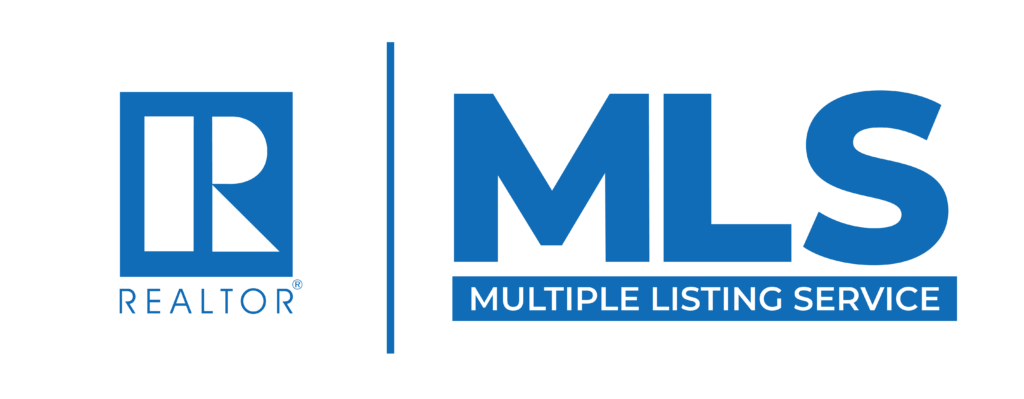As a child I would always dream of becoming rich. I would imagine a life where I owned a big house and an exotic sports car. As I became older, I began to realize that these dreams were just that, as due to my financial situation there was no way I would ever be able to afford these things. From that moment on, I begin to focus on things I believed would make me rich. I played sports, I studied in school, I worked multiple jobs, and I put my money into savings accounts.
I would hear about the stock market’s openings and closings and its’ ups and downs. I knew the wealthiest people in the world invested in the stock market, and I knew that I needed to as well. What I didn’t know at the time was how. I mean, after all the years I spent learning to balance a checkbook, budget, and do math, why wasn’t I taught how to invest? I spent most of my early years in life spending money on video games, clothes, entertainment, and other material things that got me nowhere but in debt fast.
During my first deployment, I was approached by my Platoon Sergeant, Sergeant First Class Stetson. He began to ask me questions regarding my finances, like how I was spending my money, saving my money, and what my financial objectives were. During this conversation, he suggested I take a look at some of the Dave Ramsey videos we had on the media drive. I did, and that was the day my life forever changed.
If you have not heard of Dave Ramsey, I would highly suggest taking a look at some of his work. At that time in my life, my credit was nowhere as good as it is today and my finances were not in order. The videos I watched provided a roadmap I could follow that would take me to where I wanted to be. However, that roadmap required buy in from me, and a commitment to the process. Admittedly, I strayed a little and adapted the process to fit my needs, but if you are still on the sidelines thinking about it, here are 6 tips to help you get started in investing and build your savings.
1. You Have To Start Somewhere
It’s easy to get overwhelmed by all the different investment products (stocks, options, bonds, exchange-traded funds (ETFs), mutual funds, etc) and every investment has it own initial cost and risk. However, now more than ever with the advent of platforms like Acorns and others, you don’t have to break the bank to get started. Charles Schwab is a full service broker who offers many investment products. Their S&P 500 index mutual fund (SWPPX) is one of best performing low cost funds around. Best of all, you can open an account and invest with as little as $100 and continue to buy partial shares for as little as $1. As your financial situation and investment comfort level improves you can increase your monthly contributions and explore other investment products.
2. The Sooner You Start, The Better Off You Will Be
This one should go without saying, but the sooner you start saving for your future, the better off your savings in the future will be. Pretty simple right, I know! There are two main reasons why it is important to start saving as early as possible. First, the more time you have to save money to reach a certain goal, the less money you have to save to reach it. Second, compound interest.
Let’s look at the first point. Say I have a goal to save $1 million by the age of 60. If I started saving for this goal after I got my first job at the age of 16 with my $100 initial investment, according to the savings goal calculator from investor.gov, I would only need to invest $212.81 a month for the next 44 years, assuming a rate of return of 8.30%, which is the annualized rate of return for SWPPX since its’ inception (5/19/97) according to morningstar.com. Utilizing those same parameters, if I waited to start investing at the age of 28, after I had completed college, got my first job, married my wife, and had my first child I would now have to invest $584.09 a month over the remaining 32 years to reach the same goal. That’s more than double the amount I would have had to save if I had started earlier.
Next we will look at compound interest. Without getting overly technical, compound interest is basically the interest you make off of interest, or in other words free money. In the example above we invested $212.81 a month for 44 years. At the end we had $1 million, but we only invested $112,363.68 of our own money over the years. This means the other $887,636.32 was created off compounding interest. In simple terms, you invest $100 year 1, and make $10 in interest assuming a 10% rate of return. In year 2, you invest $100 again, except now you have $210 in your account and instead of getting paid another $10 in interest for investing $100, you now receive $21 in interest on the full $210 account balance. Without compounding interest you would have only received $20 in interest over the same two year period opposed to $31. When you increase the dollar amounts, and lengthen the amount of years your interest compounds, you really begin to see the benefits of starting your investment savings early.
3. Treat Your Investments Like A Bill
It is so easy to get caught up in the daily grind of life, going to work and paying bills, that investing seems like this extracurricular activity that we don’t have time for. We say, I will start investing when… The problem is, we never get to that point, and when we finally do, we realize we do not have enough money to invest to properly reach our goals. This in turn causes us to have to work longer than we want. Studies have shown in the past, millions of Americans either do not have retirement savings, or they do not have enough savings to retire. One way to mitigate this issue is to change the way you think about investing. One suggestion is to make your investment savings a bill by putting a minimum investment amount into your budget, and investing that amount every month like you pay your bills. As shown in the previous section, the cost of waiting is high, and the longer you wait to start investing the more daunting the number required to reach your savings goal will be. If you are already at this point it is ok; however, you still need to start investing something, so go ahead and invest that “minimum amount due” you will be happy you did later.
4. Investing Is A Marathon Not A Sprint
We have all heard stories of those who struck it big in the stock market. We’ve heard about that person who made a fortune overnight because they knew the market and bought or sold at the right time. While these success stories exist, they should not deter you from investing. It is possible to get rich quick; however, investing in general is a marathon not a sprint. If not true in any other aspect of life, slow and steady can and will win you the race to financial freedom. Three keys to success in this race are financial education, developing a goal, and taking actions to achieve that goal. First, you have educate yourself on your financial situation and the means available to improve or sustain your situation. Next, and maybe the most important, you have to begin setting realistic financial goals for yourself. If the focus is retirement savings, you have to determine how much savings you will need. This should be a very detailed process where you look at things like the age you want to retire, how long you plan to live after you retire, what expenses you plan to have in retirement, and what type of activities you intend to partake in during retirement. By examining these topics in depth, you will be able to generate a retirement cost of living or annual budget. From there you can figure out exactly how much savings you will need to retire by multiplying your annual expected expenses by the number of years you expect to live in retirement. Finally, you have to take and sustain action to achieve the goal. Once you know how much savings you will need, you can utilize tools like the savings goal calculator on investor.gov to figure out your monthly savings amount. The calculator allows you to input the overall amount you want to save, an initial investment amount, number of years until you need the specified amount, expected rate of return each year, and allows you to elect how the interest is compounded. Once you hit the calculate button, it spits out the exact amount you would need to save each month in order to achieve your goal. It is important to note this calculator can be used to figure out how much money you need to save for any goal, like buying a house or a car.
5. Tax Advantaged Accounts Are Your Friend
A tax advantaged account as the name implies, is any account that you gain some type of tax advantage from by using it (401k, 403b, TSP, IRA, etc). These accounts allow you to save money for retirement and gain some nice tax benefits along the way. The biggest point here is knowing and understanding the difference between tax deferred accounts like traditional 401ks, TSPs, and IRAs vs tax exempt accounts like Roth 401ks, TSPs, and IRAs, and which one is right for you. For the sake of this discussion I will refer to these accounts as either traditional or Roth for the remainder of this section.
Traditional accounts are tax deferred accounts meaning you won’t have to pay any taxes on your money until later, which in this case is when you go to make withdrawals at the age of say 60. The tax advantage you receive when investing in a traditional account is that all contributions are made pretax. This means that when you get paid and decide to put money in your traditional account, you will not have to pay taxes on the amount you invest. Additionally, any amount you contribute is deducted from your taxable income, which in turn lowers the amount of taxes you have to pay in a given year. However, when you reach the age of 60 and start making withdrawals from your account now that you are retired, you will pay taxes on the amount you withdraw. It is also important to note withdrawal of funds from the account prior to the qualified age of 59.5 will incur a 10% tax penalty, in addition to taxes paid on the amount withdrawn, unless certain exceptions are meet.
Roth accounts are tax exempt accounts which means you won’t have to pay taxes on any of the money when you start making withdrawals at the age of 60. The tax advantage you get when investing in a Roth account is that all withdrawals after the qualified age of 59.5 are tax free. Roth accounts differ from traditional accounts in many ways. First, contributions are made after taxes are paid, so there is no immediate tax benefit of lowering your taxable income. Second, because funds are contributed after taxes, you have the ability to withdraw funds from the account before the qualified age without having to pay the 10% tax penalty or any additional taxes, as long as you don’t withdraw more money than you have contributed. However, you will pay the 10% penalty, in addition to taxes for withdrawal of any amount in excess of your original contributions. Finally, Roth accounts have income restrictions that limit who can open them. If you make over a certain amount per year, you cannot contribute to a Roth account, and must invest through a traditional account. To find out if you qualify for a Roth account you must consult with your employer or the financial institution opening your account.
So which account is best for you? There is really no right or wrong answer, but the general rule of thumb is that you should invest in an traditional account if you rather have or need the tax break, do not anticipate your taxes being higher in retirement than they are now, and or do not qualify for a Roth account. Likewise, if you do not need the tax break, you like the idea of being able to remove some money early if you have to, or you believe your taxes will be higher in retirement than they are now, select the Roth.
6. Set it and forget it
The easiest way to get started with investing and continue to grow your savings is to enroll into an automatic investment program (AIP). An AIP is where you set up automatic withdrawals of a certain amount of money from a bank account or cash holdings already present in an investment account, to be automatically invested into a predetermined stock, bond, ETF, mutual fund, or other investment product, on a predetermined day. It is essentially the equivalent of automatic bill pay, except it is used for investing. AIPs can be set up to invest with as little as $5; however, minimum requirements generally vary so you will have to check with your broker or investment platform for details.




Thank you so much, very informative. I would love to share?
I applogize for the delayed response. Thank you for reading the blog. Please feel free to share!